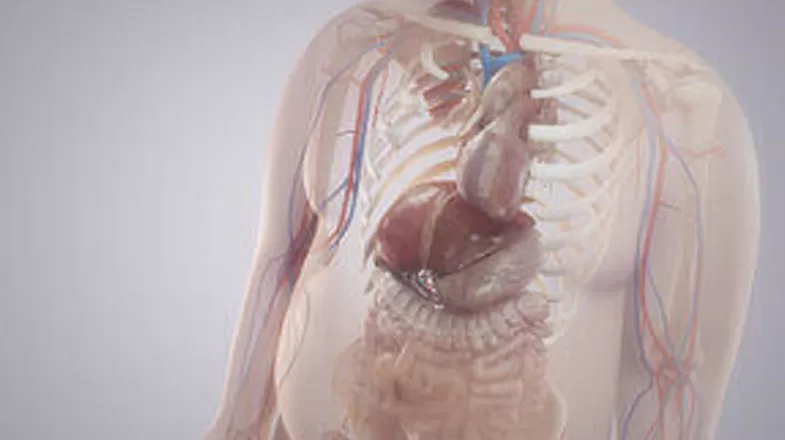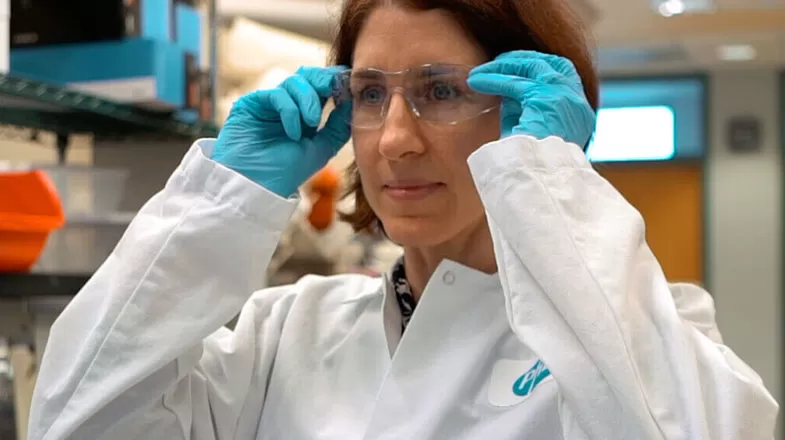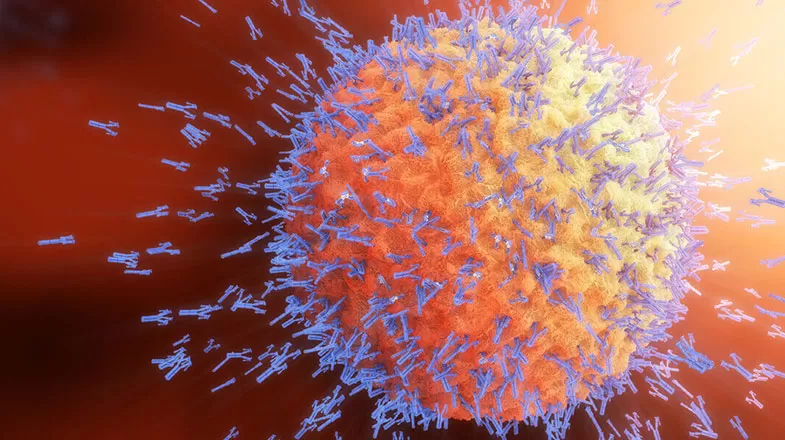Articles
Featured Articles
Read our latest stories on the people and scientific innovations making a difference in patients’ lives.

Living & Wellbeing
How Clean Are Your Hands?
Daily commitment to good hand hygiene will help to protect not only yourself, but also those around you, against life-threatening infections every single day. How? Well, most of the germs that make us sick are transferred through direct or indirect contact with contaminated hands or surfaces. Our hands carry on average 3,200 different germs belonging to more than 150 species – of which some can be harmful and cause infection – and improved handwashing technique can reduce their transmission...

Living & Wellbeing
Matter of Moments: Recognizing AFib-Stroke Risk
AFib Fast Facts: Atrial fibrillation, or AFib, is a common type of an irregular heartbeat.4 During AFib, the upper chambers of the heart beat irregularly, or too quickly, and do not pump all of the blood to the lower chambers, causing some blood to pool, and potentially form clots. If a clot breaks loose, it can travel to the brain and lead to a stroke.4 The prevalence of AFib is higher in people aged 65 and older. About 9% of people aged 65 years or older have AFib...

Science & Innovation
Through Data, Digital Medicine Paints a More Complete Patient Picture
Wearable devices have become a common way for people to count their steps, monitor their heart rate, track their sleep and collect other health data. These kinds of devices are becoming increasingly important in the realm of “digital medicine” as well. At the Pfizer Innovation Research, or PfIRe Lab, wearable devices are adding a new dimension to clinical trials, helping scientists monitor symptoms, assess health and better understand how treatments work. Digital medicine may be able to...

Living & Wellbeing
A Closer Look at NASH
Non-alcoholic steatohepatitis (NASH) is a growing public health issue, affecting an estimated three to five percent of the global adult population.[i] It typically progresses slowly with few – if any – obvious or visible symptoms[ii],[iii], making it a largely unrecognized and underdiagnosed disease. Many physicians are not intimately familiar with NASH, and, for many patients, their diagnosis is the first time they’ve heard the term. NASH, by definition, is a serious, progressive form of non...

Real People
Getting to Know Kristin Tompkins; A Day In The Life of a Pfizer Scientist in Our Pearl River Labs
Over 20 years later and Kristin Tompkins still finds a thrill working as a principal scientist on viral vaccines in Pfizer’s research & development group, at our Pearl River, New York site. Starting out as an assistant researcher, Kristin has been able to be a part of some of the amazing breakthroughs that Pfizer has accomplished. We sat down with Kristin to learn more about her role and as a member of the Pfizer family. Tell us about your work and what your typical day is like. I have had...

Science & Innovation
Unlocking the Secrets of the Immune System
The immune system consists of dozens of different cell types that are designed to protect and defend against infection. But sometimes, immune cells can respond in a way that can actually cause disease—for example, when certain cell types either over- or underact. In the field of immunology, scientists are studying how to disrupt or manage these different immune responses to improve health. In cancer, for example, the immune system is turned off or muted, while in inflammatory disorders, the...

Science & Innovation
The Process of Naming Pharmaceutical Drugs
Micronase. Daypro. Tessalon. Each of those names began on a list of hundreds of options, and the process to approve that name may have begun years prior to even the drug’s approval.The first part of this two-part series on how drugs are named explored the process for coming up with the generic name for a medication. This article explores how drugs get their brand name.Coming up with a safe brand nameUnlike generic names, brand names aren’t tied to particular suffixes, and that allows for more...

Science & Innovation
Ever Wonder How Drugs Are Named? Read On
IBRANCE. Xeljanz. Sildenafil. Viagra.Most Americans have heard of at least one of those drug names. But where do those monikers come from? Is it scientific? Metaphorical? Both?The drug-naming process is one that’s long and involved, whether a company is devising a generic name or a brand name (there are different processes for each). In fact, according to Michael Quinlan, who is senior manager, trademark development, within the Customer Analytics & Insights group with Pfizer, naming a drug can...

Capturing the Itch: Using Digital Wearable Devices to Help Patients with Atopic Dermatitis
For people who have atopic dermatitis (AD) — an autoimmune condition that causes painful, itchy, and inflamed skin — symptoms often flare up at night, leading to disrupted sleep. Until recently, there hasn’t been a way to truly capture how much a person’s quality of life is impacted by these nighttime symptoms. Patients enrolled in studies are asked to complete sleep journals, but these self-reports are based on recall and are often not fully accurate. To address this issue, Pfizer’s Digital...

Living & Wellbeing
Encouraging those Living with Rheumatic Conditions to "Connect Today" with Their Healthcare Teams
Each year on October 12, the European League Against Rheumatism (EULAR) recognizes World Arthritis Day, a global awareness day that aims to raise awareness of the symptoms of rheumatic and musculoskeletal diseases (RMDs). This year’s theme, “Don’t Delay, Connect Today,” recognizes the importance of gaining early diagnosis and access to care. This World Arthritis Day, Pfizer is encouraging those living with a rheumatic disease to speak up and talk with their doctors and healthcare teams if their...

Purpose & Ideals
Reducing Healthcare Disparities in Latino Communities
Health and healthcare disparities remain a major issue across the United States. To help achieve health equity among medically underserved populations, Pfizer’s Multicultural Center of Excellence (MCoE) partners with key multicultural groups across the country. One of our long-standing MCoE partners is Día de la Mujer Latina, a national non-profit organization focused on promoting healthy behaviors within the Latino community by providing a culturally and linguistically proficient education...

Designing Medicines to Go Where They're Needed: Lessons from Liver Targeting
Designing transformational medicines for patients requires them to be efficacious and safe. Sometimes, drug molecules have the desired effect in the organ of treatment and undesired effects in other organs, meaning one way to achieve a safer medicine is through directing the drug molecule to the place it is needed and minimizing exposure in the rest of the body. When you take a medicine, how does it “know” exactly where to go in the body to provide a therapeutic effect and which organs to avoid...
Media Resources & Contact Information
Anyone may view our press releases, press statements, and press kits. However, to ensure that customers, investors, and others receive the appropriate attention, Pfizer Media Contacts may only respond to calls and emails from professional journalists.
